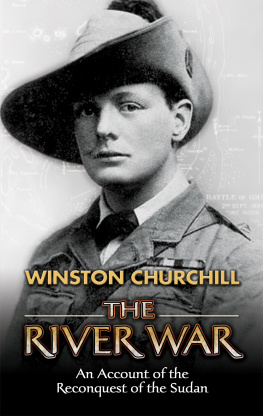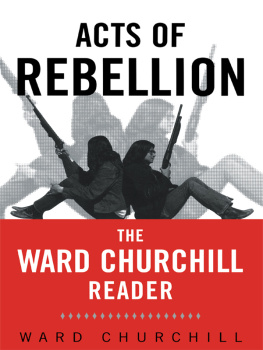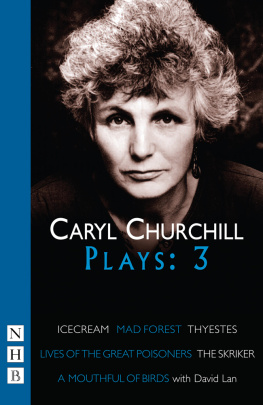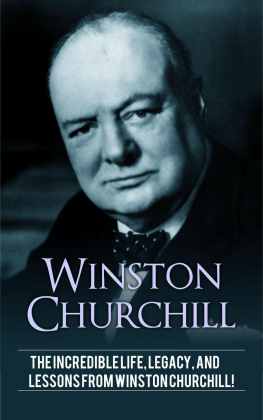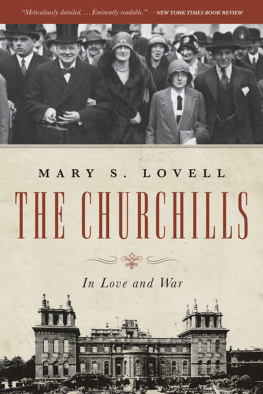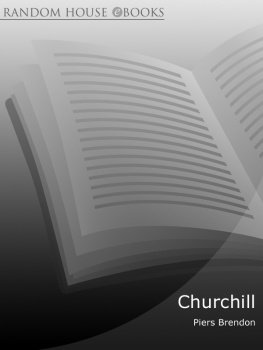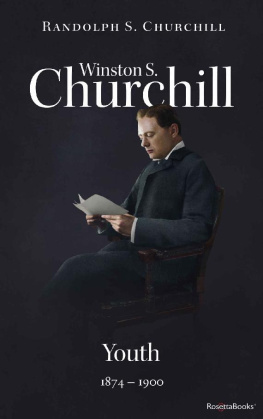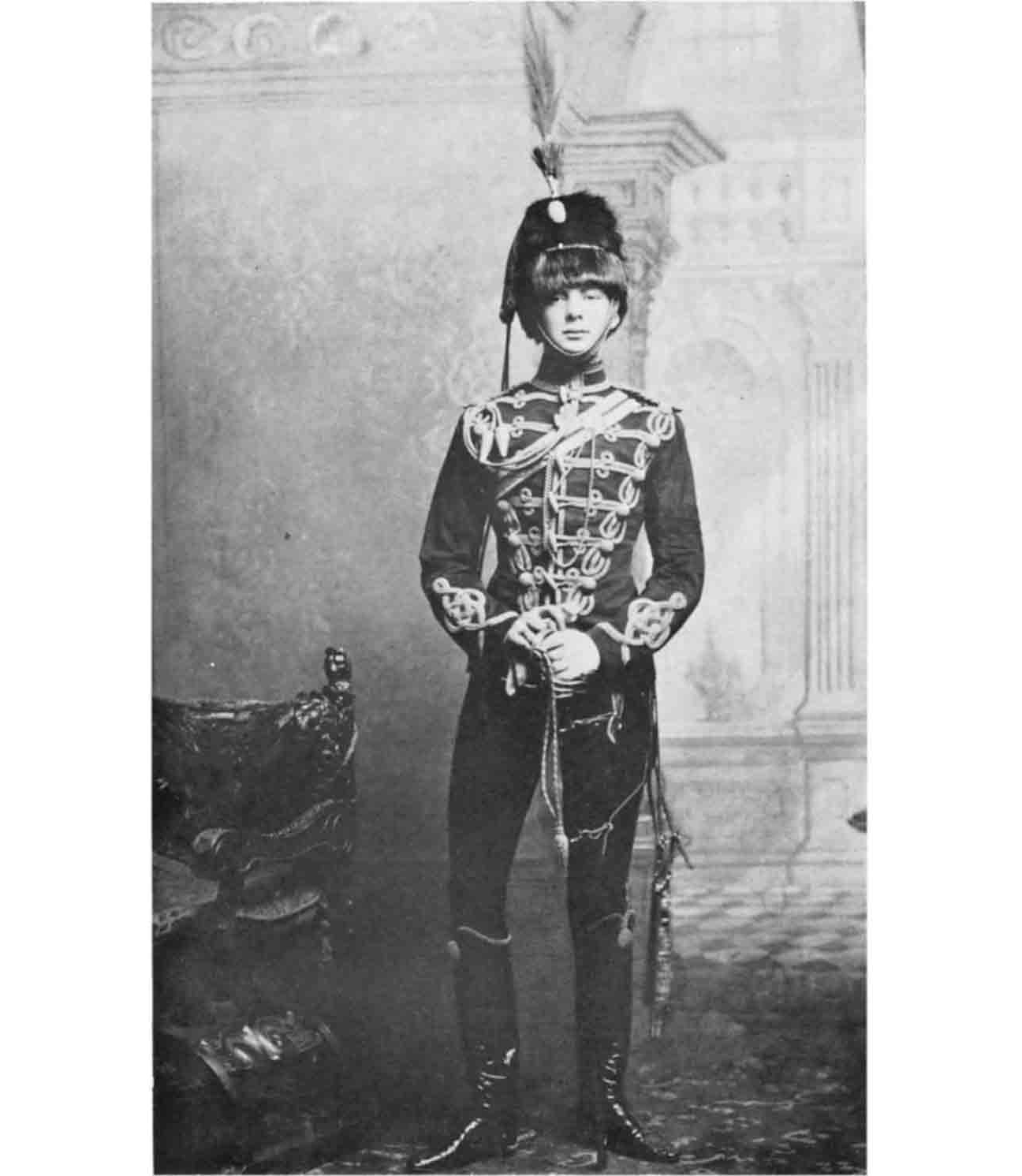
SECOND LIEUTENANT WINSTON S. CHURCHILL
4th Hussars 1895
WINSTON S. CHURCHILL
by R ANDOLPH S. C HURCHILL
W ITH AN I NTRODUCTION TO THE N EW E DITION
BY S IR M ARTIN G ILBERT
V OLUME I
Y OUTH
18741900
Hillsdale College Press
RosettaBooks
2015
Hillsdale College Press
33 East College Street
Hillsdale, Michigan 49242
www.hillsdale.edu
Winston S. Churchill: Youth, 18741900 (Volume I)
Copyright 1966 by C & T Publications Limited
Introduction 2005 by Martin Gilbert
Originally published in 1966 by William Heinemann Ltd. in Great Britain and by Houghton Mifflin in the United States.
All rights reserved. eBook edition published 2015 by Hillsdale College Press and RosettaBooks
Cover art by Jirka Vtinen (based on photograph from the Broadwater Collection, October 1900)
Cover design by Jay McNair
ISBN e-Pub edition: 9780795344459
www.RosettaBooks.com
Theme of the Work
He shall be his own biographer
Lockhart
Theme of Volume I
How an under-esteemed boy of genius
of noble character and daring spirit
seized and created a hundred opportunities
to rise in the world
and add glory
by his own merit and audacity
to a name already famous
Illustrations
MAPS BY JOAN EMERSON
Preface
Brought up to admire his grandfather, and daily growing throughout his youth and manhood in his love and veneration for his father the author has long aspired to write a filial and objective biography. This is evidenced by two telegrams that passed in 1932 between the author, who had not yet come of age, and his father, who was lecturing in America.
RSC to WSC
(Stour Papers)
TELEGRAM
[27 February 1932]
72 Glebe Place Chelsea
Have been offered 450 pounds advance on substantial royalties for biography of you have you any objection to my accepting if I do it will naturally be unauthorised unofficial and undocumented my aim would be present political history last thirty years in light unorthodox fashion believe could produce amusing work without embarrassing you mummie looking very well all counting days to your return love
R
WSC to RSC
(Stour Papers)
TELEGRAM
27 February 1932
Indianapolis
Strongly deprecate premature attempt hope some day you will make thousands instead of hundreds out of my archives most improvident anticipate now stop lecture pilgrimage drawing wearily final stage much love show mamma
F ATHER
This sensible advice was naturally heeded, resulting in advantages to the family even more abundant than Mr Churchill had predicted.
In planning what will be a colossal work, I have been guided very much by the lectures which that master of biography, Sir Harold Nicolson, gave in 1927 and which were first published in 1928 in the Hogarth Lectures on Literature. In The Development of English Biography, Sir Harold points out that Izaak Walton revived the admirable practice of introducing original letters into the text. He later says of Mason, who wrote the Life and Letters of Gray: He is said to have first conceived of this method on reading Middletons Cicero; but he expanded it, and allowed the letters to tell their own story, introducing them only with short explanatory captions, or explaining them by sensible and vivid notes. In a word, as he says, Mr Gray will become his own biographer. Sir Harold also observes in the same series of lectures:
For the Life of Johnson is a work of art, not merely in its actual excellence of outline, but in the careful adjustment of internal spaces. We have thus the absence of comment, or rather the very skilful interspacing of commentthe way in which Boswell first provides the evidence, and then, at a later period, confirms by comment the conclusion which the reader had already reached.
I have also been influenced by what Lockhart, the son-in-law and biographer of Sir Walter Scott, wrote:
I have endeavoured to lay before the reader those parts of Sir Walters character to which we have access, as they were indicated in his sayings and doings through the long series of his yearsmaking use, whenever it was possible, of his own letters and diaries rather than of any other materialsbut refrained from obtruding almost anything of comment. It was my wish to let the character develop itself.
I have also been fortified in my conception of my task by what Lockhart wrote to Scotts friend William Laidlaw, that his sole object was to do Scott justice or rather to let him do himself justice, by so contriving it that he shall be, as far as possible, from first to last, his own biographer, thus echoing what Mason had written.
Churchill himself in prefacing his Life of his father wrote:
For a thing so commonly attempted, political biography is difficult. The style and ideas of the writer must throughout be subordinated to the necessity of embracing in the text those documentary proofs upon which the story depends. Letters, memoranda, and extracts from speeches, which inevitably and rightly interrupt the sequence of his narrative, must be pieced together upon some consistent and harmonious plan. It is not by the soft touches of a picture, but in hard mosaic or tessellated pavement, that a mans life and fortunes must be presented in all their reality and romance. I have thought it my duty, so far as possible, to assemble once and for all the whole body of historical evidence required for the understanding of Lord Randolph Churchills career. Scarcely anything of material consequence has been omitted, and such omissions as have been necessary are made for others sakes and not his own. Scarcely any statement of importance lacks documentary proof. There is nothing more to tell. Wherever practicable I have endeavoured to employ his own words in the narration; and the public is now in a position to pronounce a complete, if not a final, judgement.
And even earlier, writing to his mother:
WSC to Lady Randolph
EXTRACT
31 March [1898]
Camp Peshawar
As to the Biographerwho may investigate another human wretchs lifeI would say as Oliver Cromwell did to Sir Peter LelyPaint me as I am and thereupon was painted wart and all.
With the wealth of material which has been entrusted to the author about a man who was in his own lifetime widely saluted as a patriot, a hero and a genius, it would scarcely be possible to write a dull book. Nonetheless the epic of his life, the innumerable activities in which he was involved, the vast number of personalities with whom he was brought into conflict or contact or with whom he transacted business, have presented the author with problems and decisions often of a tortuous complexity. What to put in? What to leave out? What to relegate to appendixes? These have not been easy questions to answer. After much thought and consultation the author decided upon the following method:
To assemble the body of relevant original and unpublished documents and letters in one or two independent appendix volumes as companions to each volume of the main work; to compile these first, and to use them as the raw material from which each volume of the main work was to be written. The general reader may rest assured that each volume of the main work will contain all that is most interesting and exciting in the life of Sir Winston Churchill, while the student and historian who wish to have access to the full documentation will find it readily available in the Companion Volume or Volumes to the main work, as each Companion comes from the press.


